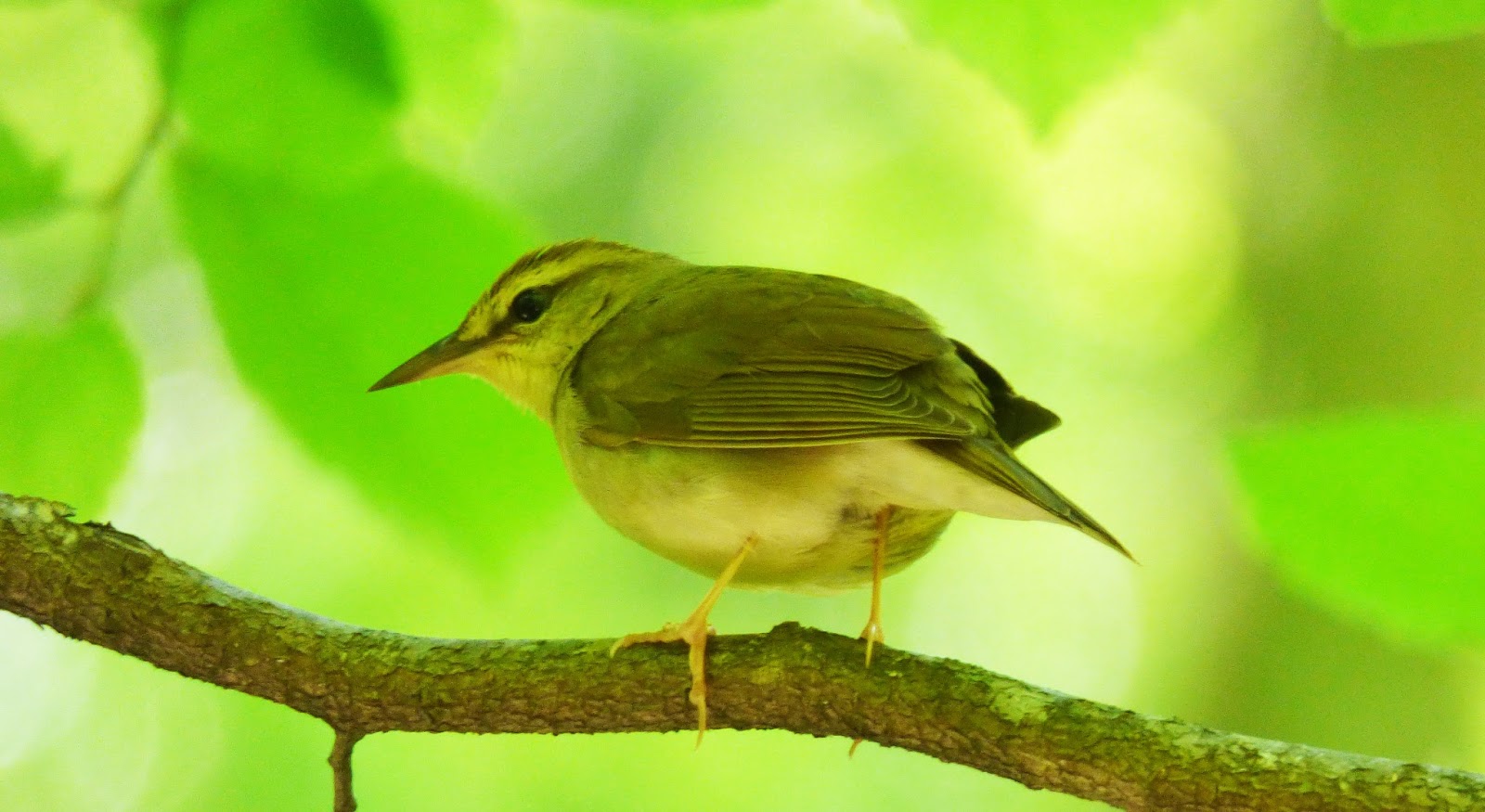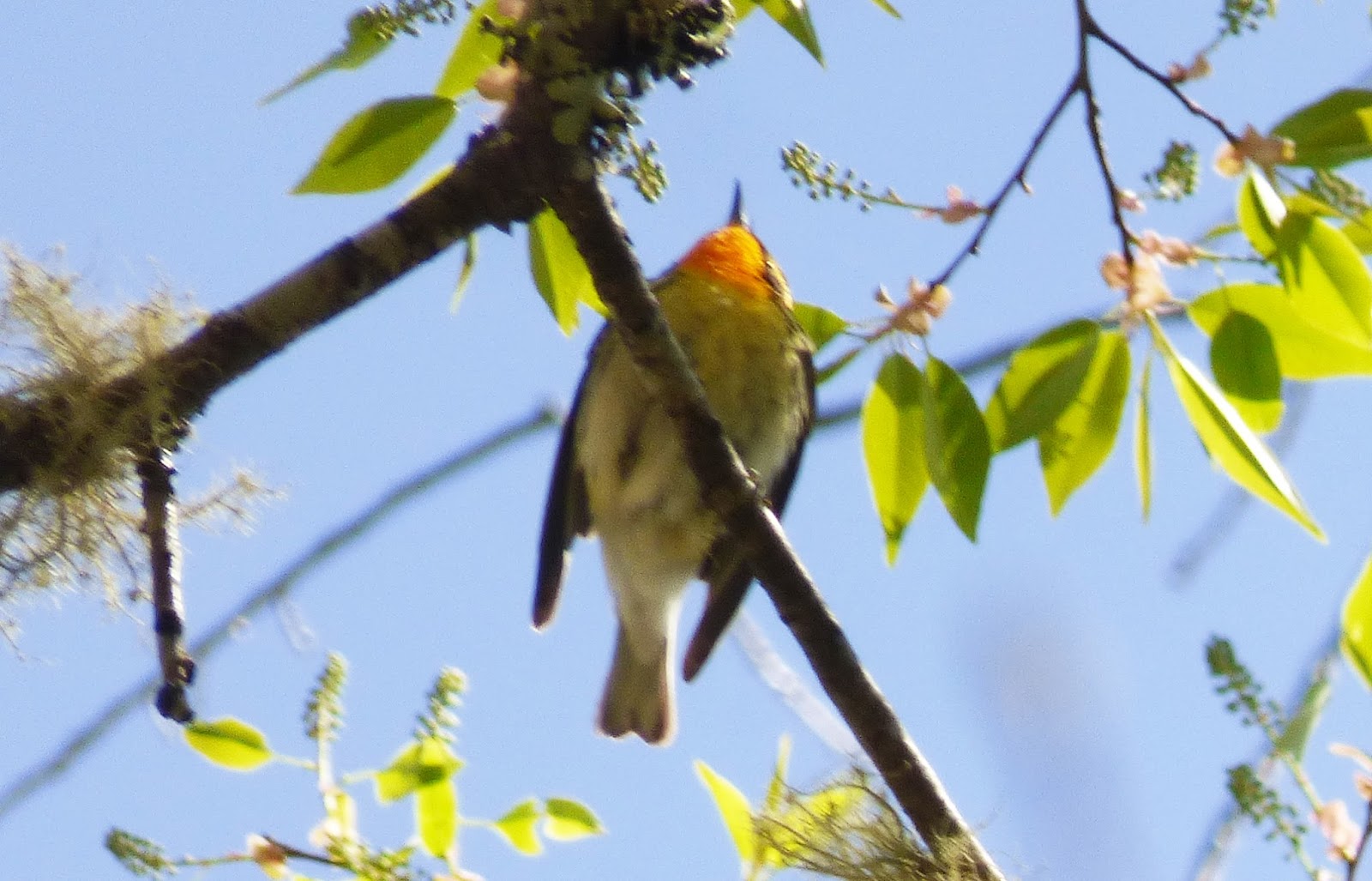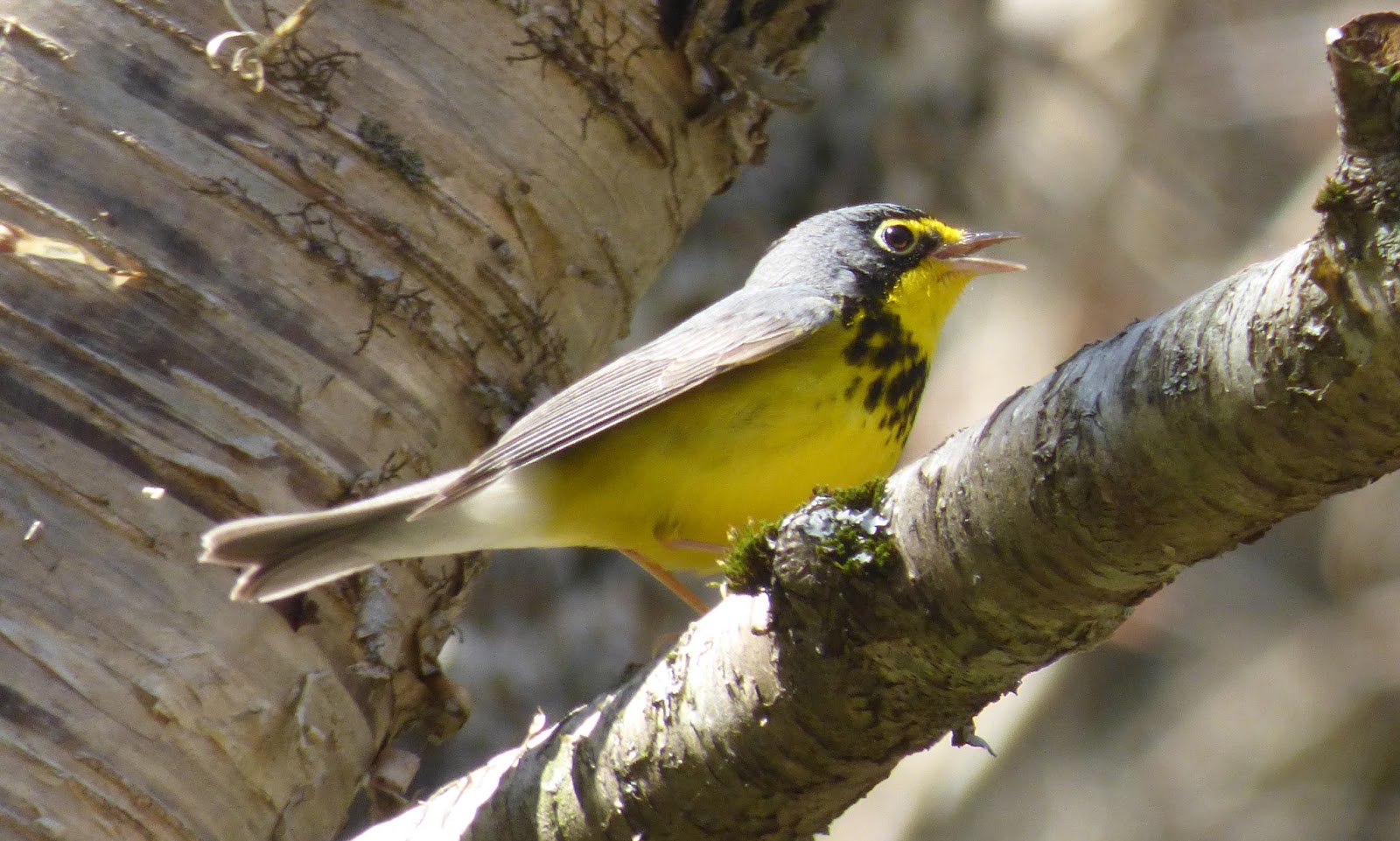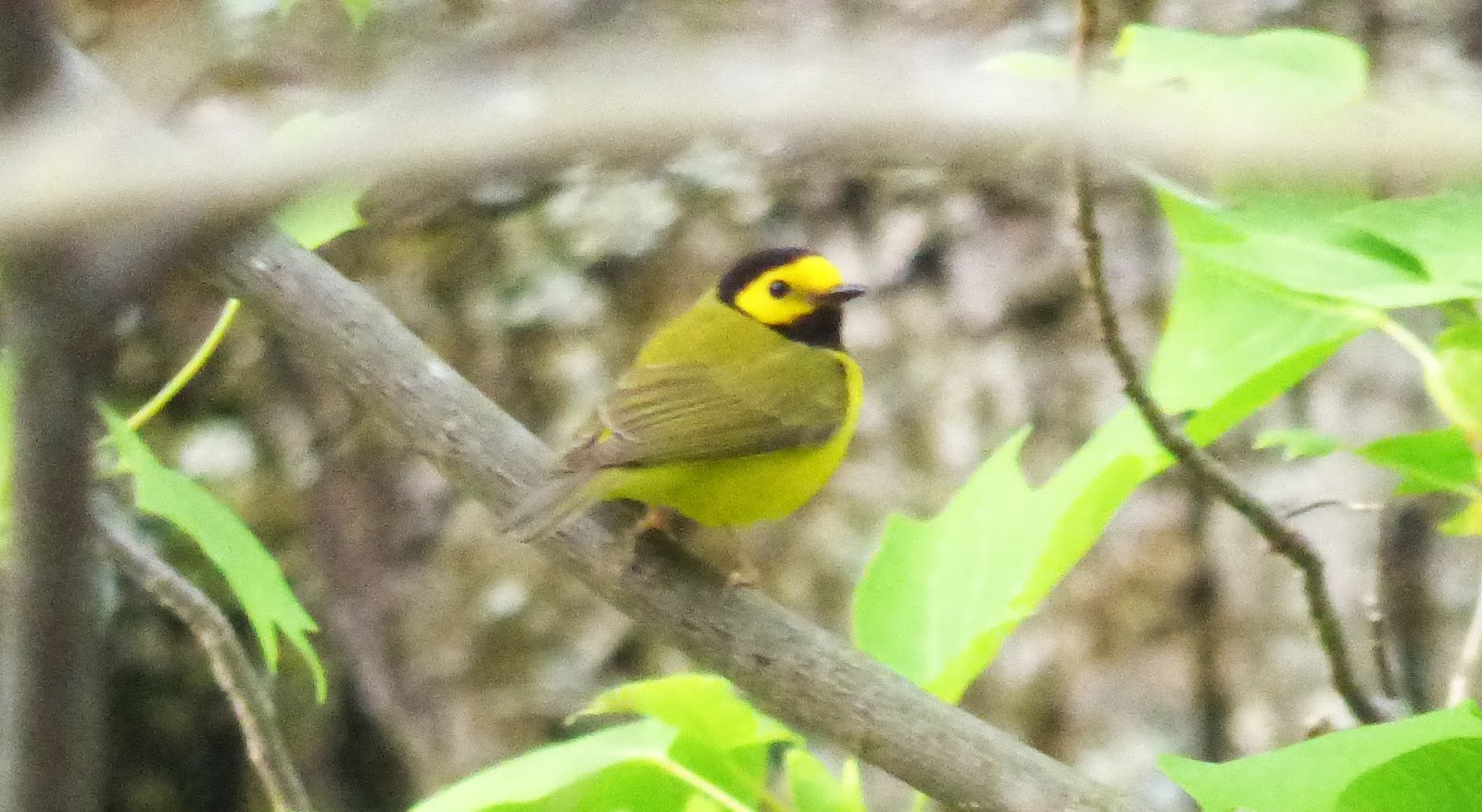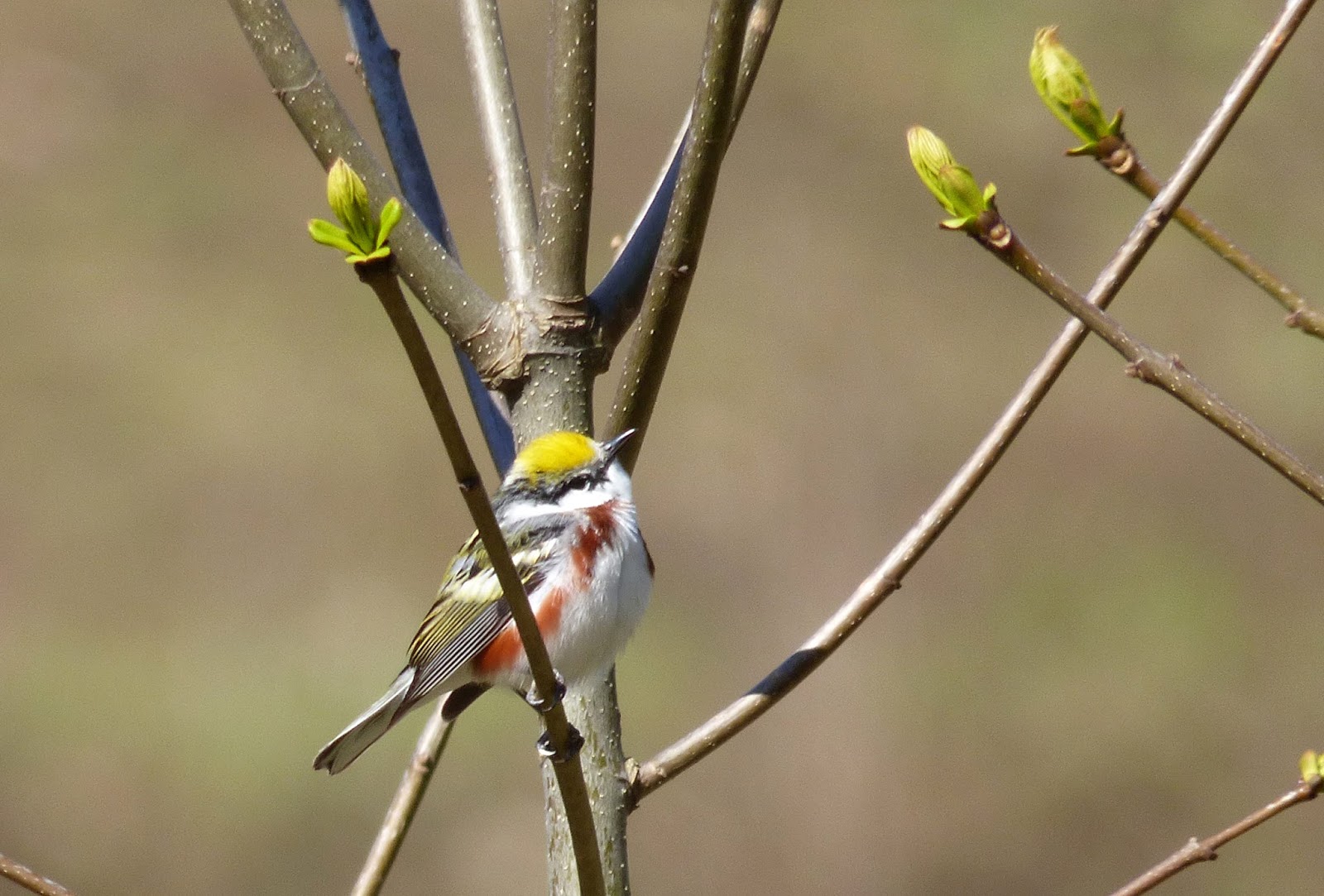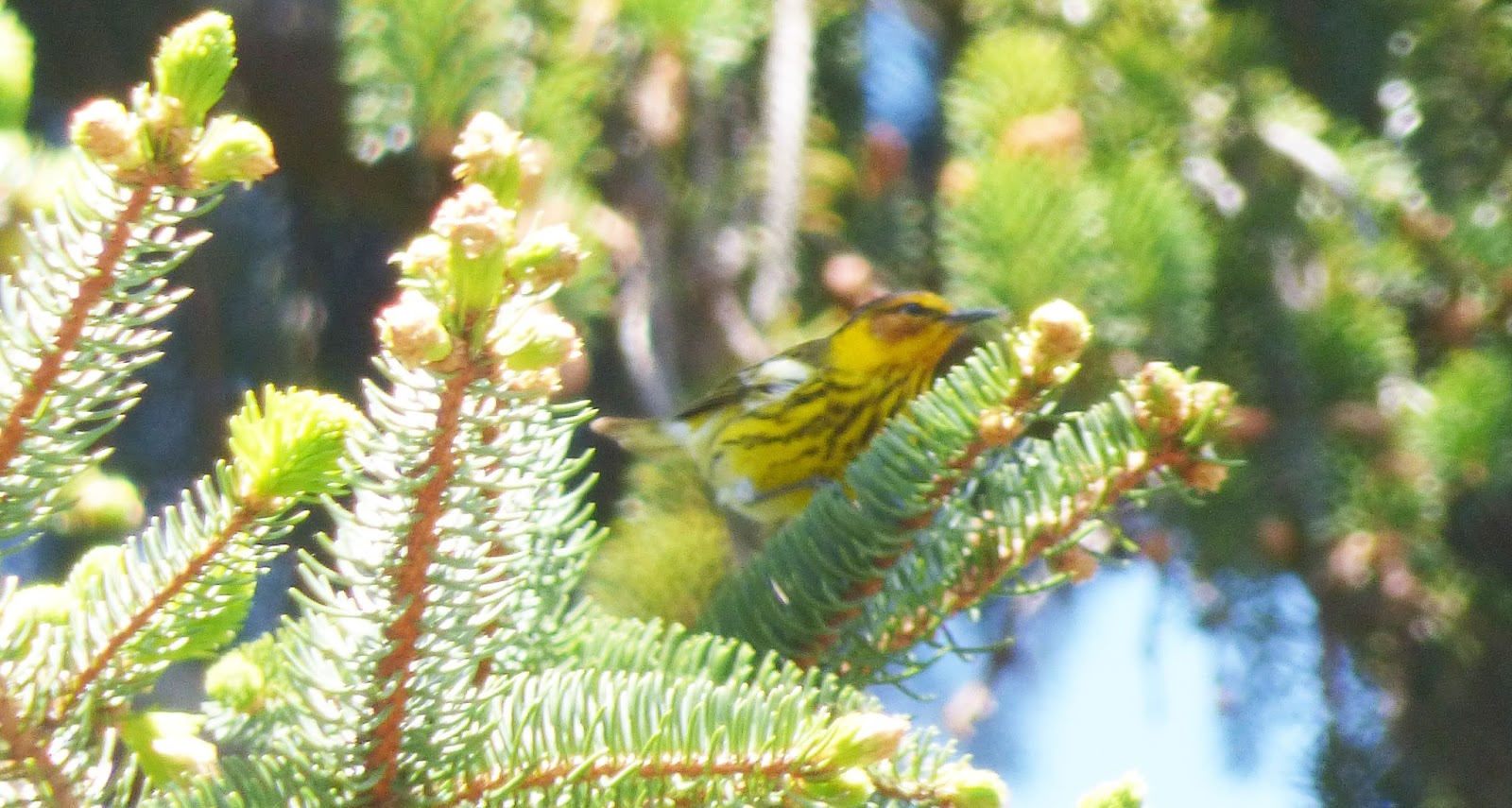The Joint Aquatic Sciences Meeting (JASM) brought me to Portland, Oregon for a week jammed wall-to-wall with more than a dozen concurrent sessions of 15-minutes presentations from limnologists (they study lakes), oceanographers, freshwater and wetland scientists, and phycologists (folks who study algae, as I learned).
 |
| Black-headed Grosbeak, Mount Tabor Park |
The humorous among us found that amending the conference acronym with the host state’s two-letter postal code yields ORJASM, which captures the cathartic excitement that abounds whenever 3000 ecologist super-nerds assemble (insert witty Oregon Trail computer game reference here).
I was there to present on my research on waterfowl at Lake
Mattamuskeet in eastern North Carolina, but I wasn’t going to fly all the way
across the country without fitting in some birding. So I arrived the weekend before and stayed
for the Memorial Day weekend that followed to explore Oregon’s lush forested
mountains, high deserts, valley wetlands and iconic coastline in search of
lifers.
I scored a coach-surfing host in one of Portlandia’s eastern
suburbs, convenient for a foray up Oregon’s famous Colombia River Gorge. Here tree-trunks are car-sized, ferns cover
the forest floor and clear trout-filled streams spill along boulder-strewn
valley floors. This is temperate
rainforest and it seems like the kind of place that creatures from Avatar
should appear. Instead I found one of my
top targets, the American Dipper (a.k.a. Water Ouzel).
 |
| American Dippers, Eagle Creek |
I found some other exciting birds here, like Western Tanager
and Rufous Hummingbird, but the canopy was filled with invisible singing warblers
that I couldn’t identify.
 |
| Western Tanager, Eagle Creek |
I had listened
to all the western warbler tapes, but it seems like the songs are quite a bit
more variable than the eastern species I recognize. After giving up on seeing the Black-throated
Grays or Townsend’s or Hermits or whatever was teasing me, I continued up the
gorge.
 |
| Black-throated Gray Warbler, seen later in Mount Hood National Forest |
The transition from rain forest to desert is dramatic. Suddenly the Naavi homeland is replaced by a
brown open scrubland, and then eventually there’s nothing but rolling hills of
billowing wheat and pasture. Here is
where I saw my first Vaux’s Swifts.
A southward turn at The Dalles brought me to the town of
Tygh Valley, a crossroads that I had been told was home to an ample population
of Lewis’s Woodpeckers. It took
strolling along several of the cross streets and enduring as many odd looks
from passersby before I found them near the river at the base of town.
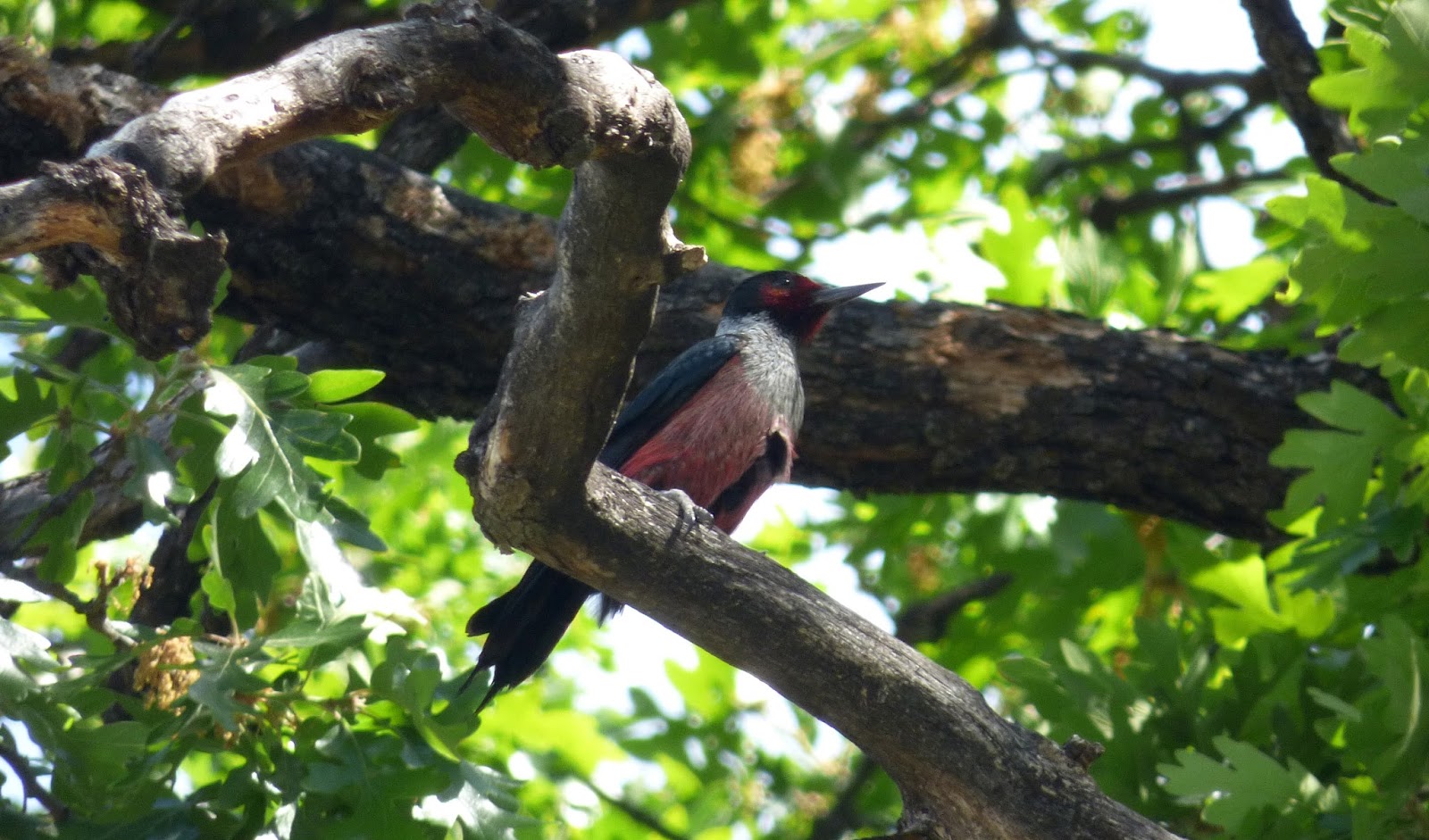 |
| Lewis's Woodpecker, Tygh Valley |
A pair of Bullock’s Oriole’s zoomed by, but
there wasn’t much else going on, so I returned to my parked car where a Lewis’s
Woodpecker was circling around overhead, fitting that birding maxim: the bird
you seek is usually in the parking lot.
Next stop on my loop was a managed game land where I spotted
the first of four empidonax targets:
Gray Flycatcher.
 |
| Gray Flycatcher, White River Wildlife Management Area |
Here I noticed a raptor
high overhead being mobbed by a Common Raven—a Golden Eagle!
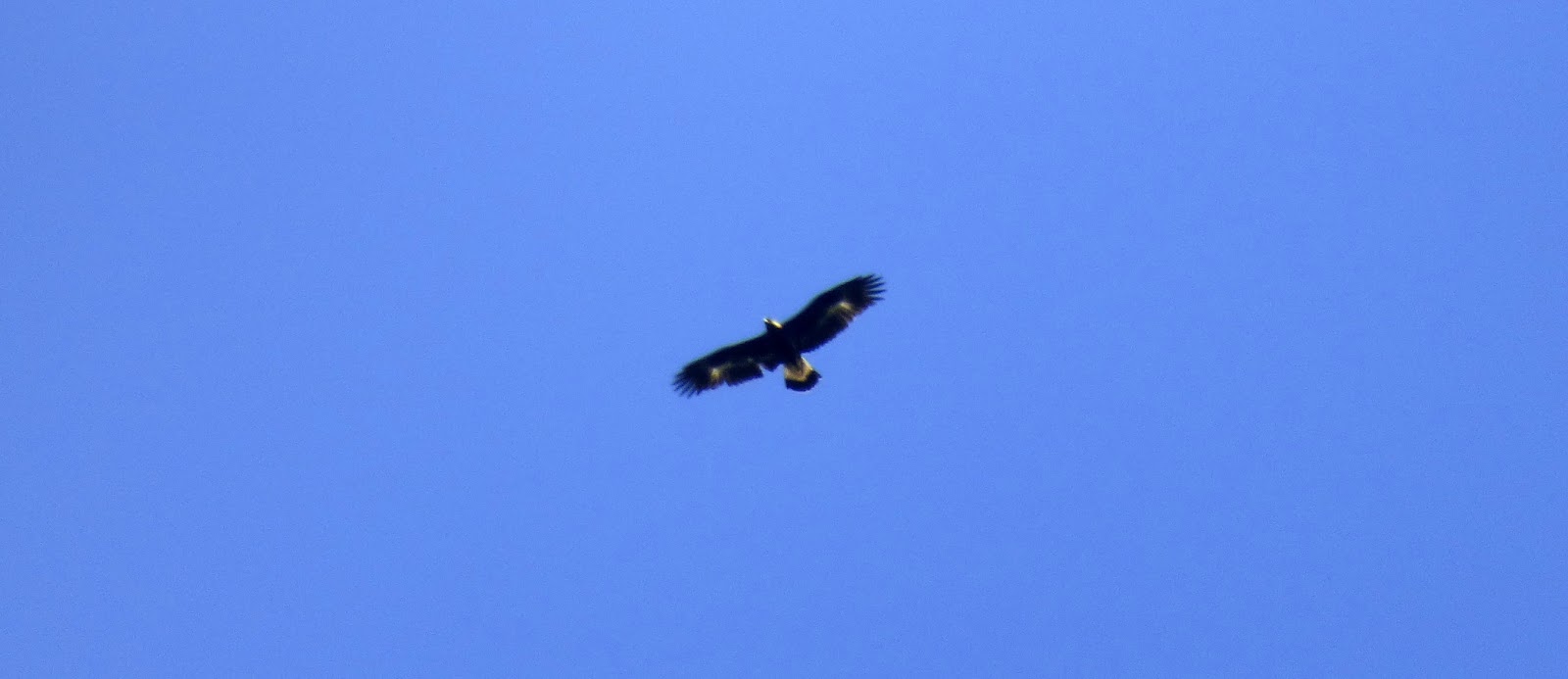 |
| Golden Eagle, White River Wildlife Management Area |
This was only the
second I had ever seen, though I’ve still yet to find an adult.
I worked my way back west circumnavigating the majestic Mt.
Hood, which juts abruptly white through the crumpled blanket of evergreen.
 |
| Mount Hood |
As it was late afternoon by this point, bird
activity was low in the high elevation forest, but I was able to track down my
target here: a Varied Thrush!
Fast-forward through an enjoyable and stimulating week of ORJASM...
...and I struck
out for the Pacific Ocean. On the way I stopped to bird the lush coastal range
to find Pacific-Slope and Hammond’s Flycatchers, MacGillivray’s and Hermit
Warblers, among others.
 |
| lush, moss-covered vegetation (with Pacific Wren), Tillamook State Forest |
 |
| Hermit Warbler, Tillamook State Forest |
I heard a Sooty Grouse drumming here, but it
wouldn’t show itself.
By the time I arrived at Cannon Beach it was late afternoon
and hundreds of people were out enjoying a rare sunny day on their holiday
weekend. My main targets here were
Tufted Puffin and Pigeon Guillemot.
After finding a few thousand Common Murres, but neither target alcid at
the “bird rocks” I made my way the mile or so down the beach to “Haystack
Rock.” Here I encountered Tim, a volunteer
monitoring the rock’s puffin colony for the Fish and Wildlife Service. Tim reported seeing 16 puffins in the
morning, but regretfully informed me that all were currently sequestered deep
in their burrows or out at sea feeding.
 |
| Common Murres, Haystack Rock |
There were no guillemots in sight either, though masses of perhaps 1500
Common Murres were huddled together along the cliff top along with several
dozen nesting Western Gulls.
 |
| Haystack Rock with Bald Eagle terrorizing alcid/gull colony |
An
approaching Bald Eagle caused chaos among the rock’s residents sending flocks
of murres swirling out over the beach and into the water. Apparently the eagles have prevented the
murres from successfully breeding here over the past several years, though they remain locally
overpopulated and continue to try. The
puffins are declining, but persist and breed when the crowds of murres don’t
block the entrances to their burrows. If it weren’t for the Department of the
Interior protecting this rock, nothing would breed here at all.
 |
| nesting Black Oystercatcher, Haystack Rock |
Tim called it a day and encouraged me to return in the
morning when the puffins are easier to see.
I stuck around for another hour or so and being the lone man with the
spotting scope ended up being approached by all sorts of curious
beach-goers.
“Hey man. Are those penguins flying around?”
It became clear that Oregonians have an endearing
friendliness, and attracted to the area by its natural beauty, are keen to
learn about local wildlife.
The puffins never made an appearance that afternoon, nor did
the guillemots. I had a free place to
stay lined up in Portland but the round trip to Portland and back to the coast
would be nearly four hours—time I would
much rather spend birding (and I would be racking up quite few hundred odometer
miles on rental cars already). So I
cruised up to the town of Seaside and after a delicious taco dinner at Casa del
Sol staked out a secluded church parking lot and bundled myself up in the
passenger seat. How quickly I revert to
budget backpacker mode when I get to birding and travelling on my own. I spare no daytime for meals; and anything
above a bunk in a hostel dorm becomes an unconscionable indulgence. Sometimes "Eat. Sleep. Bird." becomes merely "Bird."
I awoke back-sore at dawn to the sweet serenade of a
Swainson’s Thrush. Rather than return
immediately to the Haystack Rock for the puffins I cruised north to Fort
Stevens State Park at the mouth of the Colombia River. At the Carolina Bird Club meeting in
Hendersonville the other week I had picked up a 1978 copy of Birding
Oregon by Fred L. Ramsey that had been left in the free bird book pile at the registration table. Obviously a lot of the information contained is now, 35 years later, out of date, but the book had promised that this area, Clatsop Spit specifically, was
one of the best birding spots in all of Oregon.
I guess I didn’t pick up any lifers here, but author’s
claims seemed to ring true through the decades.
The back side of the spit offers mud flats and marsh for excellent
aquatic bird habitat. It was a bit late in
the spring season for shorebirds, but about half a dozen species lingered and
three breeding plumage Dunlin tripped the local ebird filters (late date for them
I presume). My favorite feature here is the large elevated platform that offers a commanding view of the jetty and
ocean, teaming with bird life. Pacific
Loons, Western Grebes and Surf Scoters littered the ocean, to name just a
few. I saw a smaller alcid fluttering
along the water. It was perhaps a bit
larger than a Dovekie (my east coast frame of reference), but definitely
smaller than a Common Murre—maybe an auklet or a murrelet? I had to let that one go.
Farther down the beach on a dune above the skeletal
remains of a ship wreck, I was scanning the ocean when some guy came jogging up
to me sputtering something about a whale.
I looked up, and—holy sea cow—a pair of whales were blowing in the
middle distance. I later was told that
they were probably Gray Whales, so maybe I had a lifer after all.
It was hard to pull myself away from the productive ocean, but
my malnourished stomach was growling and I wanted to get back to Haystack Rock
before too late. Tim had suggested 10 to
10:30 as the best time for seeing puffins.
After another taco meal at Casa del Sol I raced once again
to the utopic town of Cannon Beach, bustling with Memorial Day weekend activity. By the time I found a place to park and made
it out to the rock it was nearly 11. Tim
was at his usual spot for puffin surveying some 200 yards up the beach. The Eagle was back and had chased all the
Murres off the rock. Not surprisingly no
puffins were in sight. There was this
pair of Pigeon Guillemots having some sort of domestic dispute.
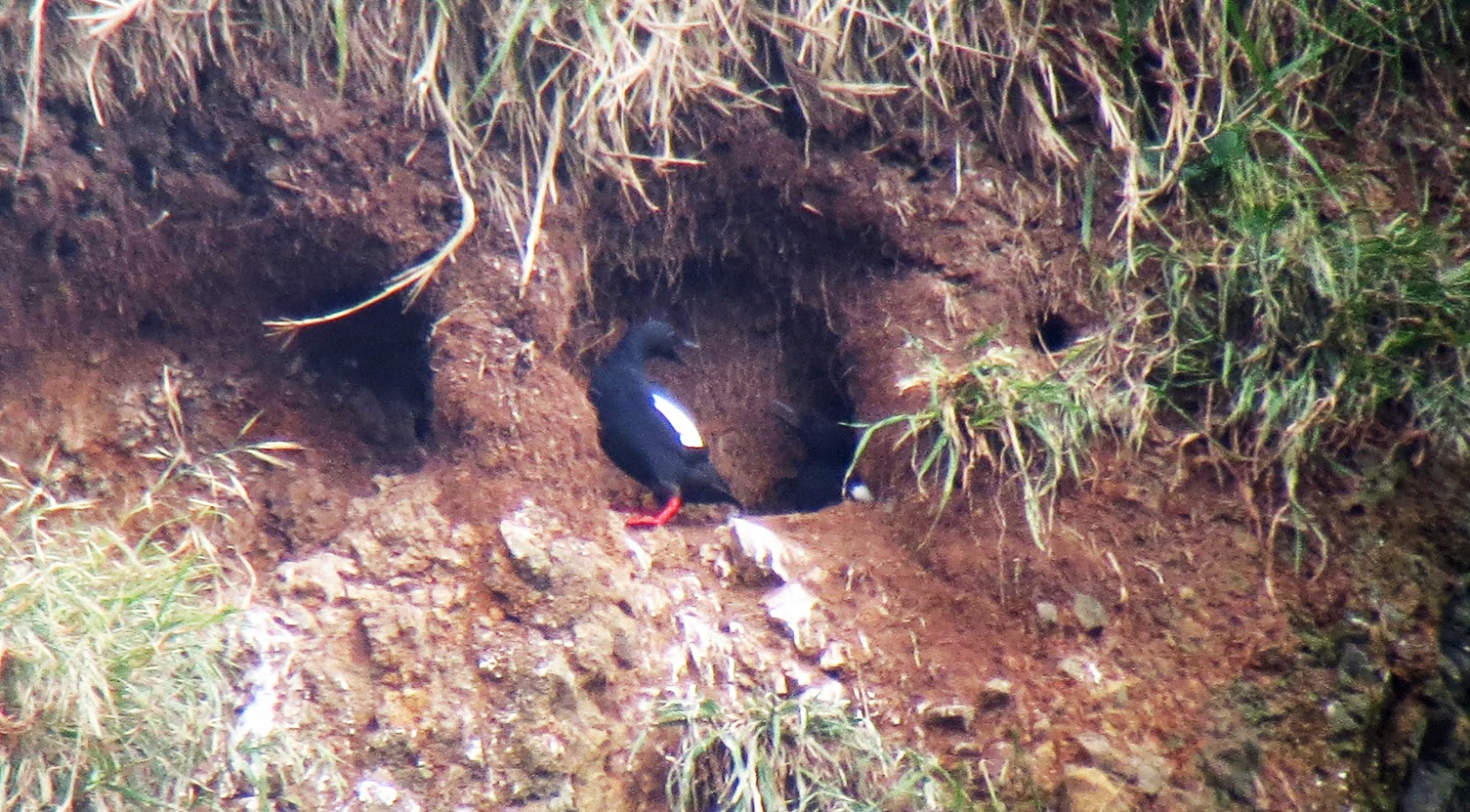 |
| Pigeon Guillemots, Haystack Rock |
Tim tried to tell me that the puffins were all gone, but
scoping the ocean I noticed a few bobbing in the chop.
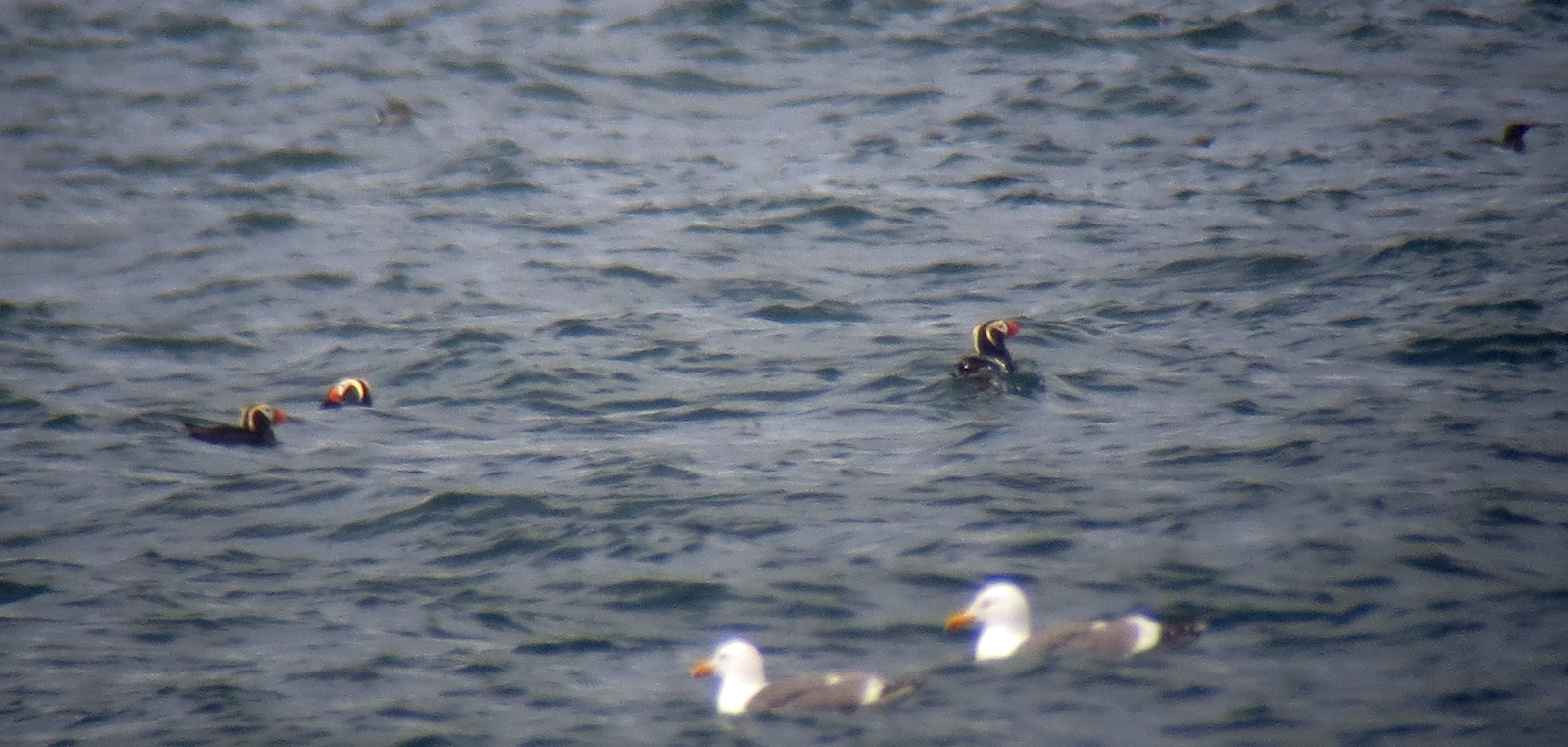 |
| Tufted Puffins (and Western Gulls), Haystack Rock |
Quite a few were out there actually; twelve was my conservative
high count. Tim recorded this
observation in his notes and thanked me for the puffin spotting (something I have some experience with in the Atlantic).
This population of Tufted Puffins at Haystack Rock has been steadily
declining over the last 50 years and it isn’t yet clear why. I would think that having Bald Eagles
constantly present predating on the overpopulated Common Murres can’t be
helping the puffins’ chances for successful breeding. How are they supposed to feed their chicks
with the threat of death-by-eagle looming on top of their roofs?
On my way back from the coast I dropped by Jackson Bottom
Wetlands Preserve to look for Cinnamon Teal.
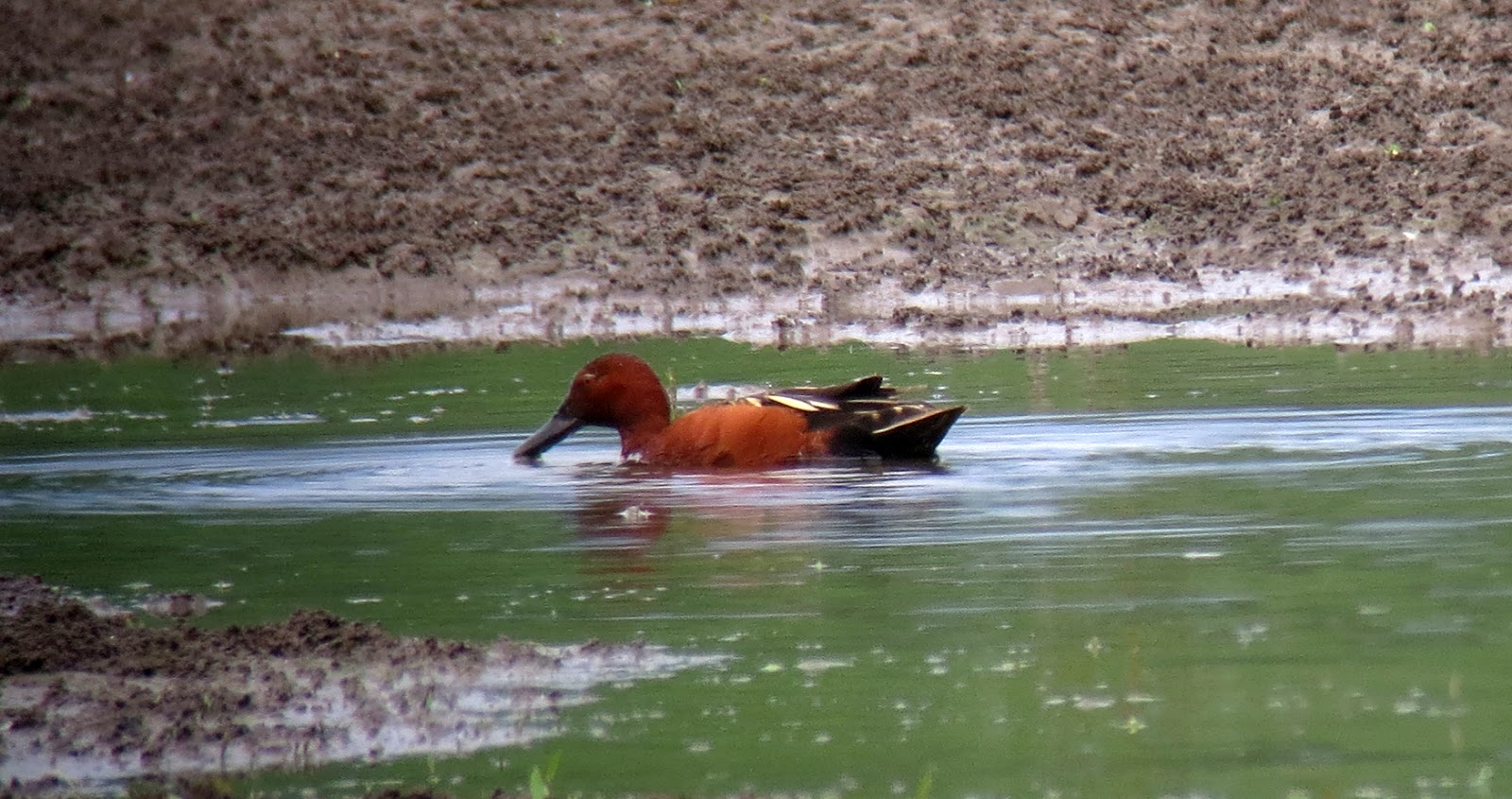 |
| Cinnamon Teal, Jackson Bottom Wetlands Preserve |
These beautiful ducks are local residents and I saw them immediately
from the visitor’s center, but took a short stroll down one of the paths to get
a closer look. En route I was besieged on all
sides by vociferous bird activity.
 |
| Anna's Hummingbird, Jackson Bottom Wetlands Preserve |
Anna’s
Hummingbirds were zipping by, Spotted Sandpiper’s were battling for territory
and a Virginia Rail shuffled away from me as I approached. The best bird for me here was this gorgeous
Lazuli Bunting that popped up briefly to sing.
 |
| Lazuli Bunting, Jackson Bottom Wetlands Preserve |
He probably had fledglings to feed since he didn’t stick around for a
better photo.
On my final day in Oregon I jogged back east to search for
some targets I had missed the weekend before: Dusky Flycatcher, Cassin’s Vireo
and Cassin’s Finch.
 |
| Cassin's Vireo, Mount Hood National Forest |
I was able to track down
these birds along with the other targets on this whole Oregon trip thanks to some excellent
advice provided by Stefan Schlick.
Stefan seems to have the knowledge of a breeding bird atlas and was able
to direct me to more life birds than I had time to try to find. Thanks
to his help I was able to see 19 life birds (21 for the ABA area) and in doing so
accumulated an Oregon list of 133—not bad for just a few days!
While I’m thanking people, I also want to give a shout-out
to Bethani and Kaola who were generous enough to welcome a thrifty birdaholic
like myself into their homes.
Oregon is certainly a wonderful place. Yes, the birds and landscapes there are
phenomenal and Portland is one of the most pleasant, livable cities I’ve
experiences, but I was really impressed by the friendliness of the people.
Fortunately, I left plenty of ‘opportunity
birds’ on the table and would be glad to have another chance to visit the
Pacific Northwest and explore further.
 |
| MacGillivray's Warbler, Mount Hood National Forest |
For now it’s back to the grind of field work, lab work and
meetings in the stifling North Carolina summer.
Hopefully I can get on a trip offshore soon.
